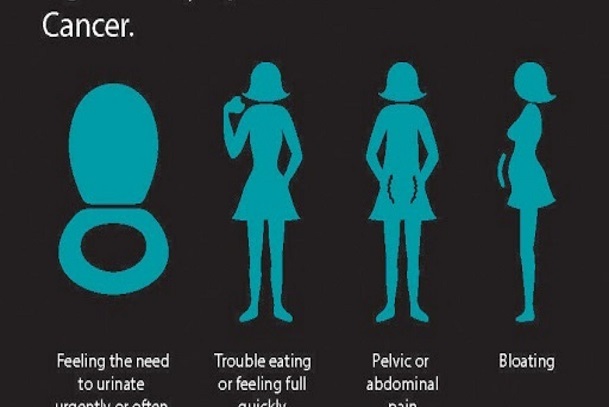 Wash your hands regularly and wear a face mask.
Learn more
Wash your hands regularly and wear a face mask.
Learn more

Ovarian cancer begins in the body when the cells around the ovary begin to function abnormally or starting developing certain tumors.
Most times, ovarian cancer starts in the epithelium, or outer lining of the ovary having no or little symptoms, which can be easily overlooked by a woman because they are usually mistaken for other, more common problems (illness). Early stage ovarian cancers symptoms are quite rare, but in majority of women, these symptoms don’t show up until the cancer had spread and gotten to its advanced stage (when the growth of the tumor triggers such symptoms). The symptoms can resemble other conditions, such as premenstrual pains, temporary bladder pain or irritable bowel syndrome. However these symptoms can continue for days and get worse.
The most common symptoms of ovarian cancers include:
These symptoms are usually caused by benign (non – cancerous) diseases and secondary cancers (cancers from other organs). But women with ovarian cancer tend to report that such symptoms are quite persistent, and occur more often and severely. And when they continue for more than two (2) weeks, or new and unusual, it is advisable to seek a gynecologist for diagnosis.
Other symptoms have also been commonly reported by women with ovarian cancer, yet these symptoms don’t determine if a woman has ovarian cancer or not because they are quite common in women without ovarian cancer too. And they include:
The symptoms will persist if they’re due to ovarian cancer. It usually become more severe as the tumor grows. By this time, the cancer has usually spread outside of the ovaries, making it much harder to treat effectively.
Stages of Ovarian Cancer
For effective diagnosis of ovarian cancer, there is a need to determine the stages for effective treatment plan. Staging helps to determine how far ovarian cancer might have spread. Just like other cancer staging, there are four stages in ovarian cancer (stage I – Stage IV), which are group into three levels; and they are localized, regional and distant stages
At stage I, the cancer is limited or localized to only one ovary, then into both ovaries. Soon afterwards, the cancer cells flows on the outside of the ovary.
At stage II, the tumor has spread to other pelvic parts; to the uterus or fallopian tubes. Then it spreads also to the bladder or rectum.
At stage III, the cancer has spread beyond the pelvis towards the lining of the abdomen and the lymph nodes in the abdomen, outside of the liver; in which there are forms of cancer at least three – quarter (3/4) of an inch are seen on the abdomen, or outside the liver. However, the cancer isn’t inside the liver.
In stage 4, the tumor has metastasized, or spread, beyond the pelvis, abdomen, and lymph nodes to the liver or lungs. The cancerous cells are in the fluid around the lungs. This is the most advanced stage where the cells have reached the inside of the spleen or liver or even other distant organs like the skin or brain.
[Next on Ovarian Cancer: Causes and Risk Factors]